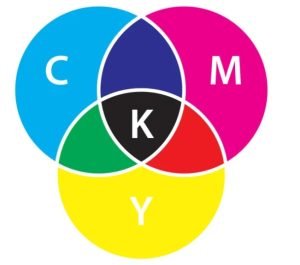Why Are RGB and CMYK Different?
There are many color modes, but RGB and CMYK stand out for their specific uses. RGB (Red, Green, Blue) is primarily used for digital displays like computers, phones, and TVs. It’s an additive process, meaning it combines light to create colors. RGB is perfect for screens that generate their own light, especially in dark environments.

CMYK (Cyan, Magenta, Yellow, Key) is the go-to for printed materials. It’s a subtractive process, where inks remove certain light wavelengths to produce colors. The ‘Key’ often represents black and is vital in the printing process.

What Can They Do?
RGB is suited for digital devices, as it uses internal light to display colors. It can produce over 16 million colors, with each of the three primary colors having 256 levels. This range was once limited to 216 ‘web safe’ colors, but technology advancements have expanded this significantly.
CMYK, used for printing, relies on external light reflecting off the material. It cannot create white, instead using the material’s color as white. While CMYK can’t match RGB’s color range, it’s still effective for most printing needs, creating various shades of black and other colors.

How Should You Use Them?
When preparing files for print, consider the limited color range of CMYK. Programs can convert RGB to CMYK, but the true result is only visible after printing. For specific color needs, like logos, working directly in CMYK is advisable. For general design, RGB is preferable for its broader range and can be converted to CMYK later for printing.
In unique situations, CMYK is used for subtle tones. Pantones are also common in printing for consistent, unique colors, especially for logos.
Always check with your print shop for their preferences, as some may request RGB files for better results with their equipment.

For a quick recap of the difference, watch this video.
